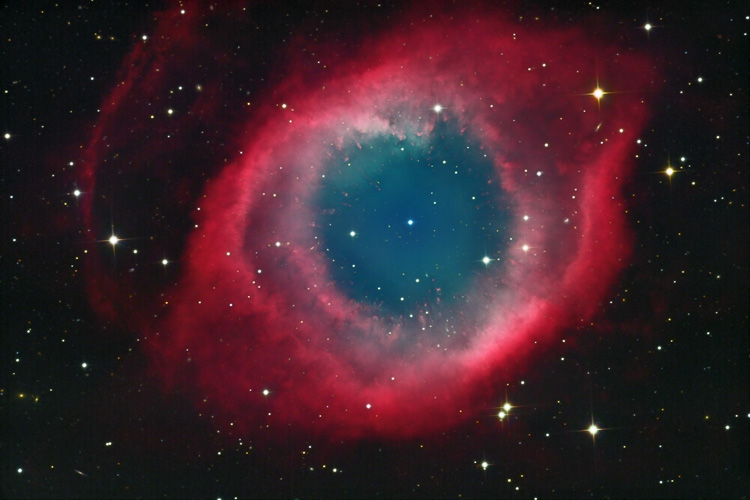
clic for 70% size 2800 x 1867 (843 kB)
About this Image |
|
|
The Helix Nebula is a vast glowing cloud of Hydrogen, Nitrogen, Oxygen, and other elements some 500 light years away
toward the constellation Aquarius and spans about 2.5 light-years.
The nebula is made up of gas ejected from a blueish dying star, which is located in the center of the nebula.
|
|
|
| Optics |
20" cassegrain in corrected primary and secondary focus at f/3 and f/9, |
| Mount | Liebscher GEM |
| Camera | SBIG STL-11000M, internal filter wheel |
| Filters | Astronomik LRGB |
| Date | L: Aug 04, 2008 at f/9, colors from 2007 at f/3. |
| Location | Hakos/Namibia |
| Sky Conditions | mag 6.5, high transparency, temperature 10 C, |
| Exposure |
Ha:L:R:G:B= 180:180:60:60:60 min by Josch Hambsch (10 min sub-exposures for LRGB, 30 min subs for Ha) all 1x1. |
| Processing |
Image aquisition and calibration in Maxim DL 4.5; Photoshop: curves, color balance; |
|
Thanks to Josch and Karel for providing the raw data! |
|